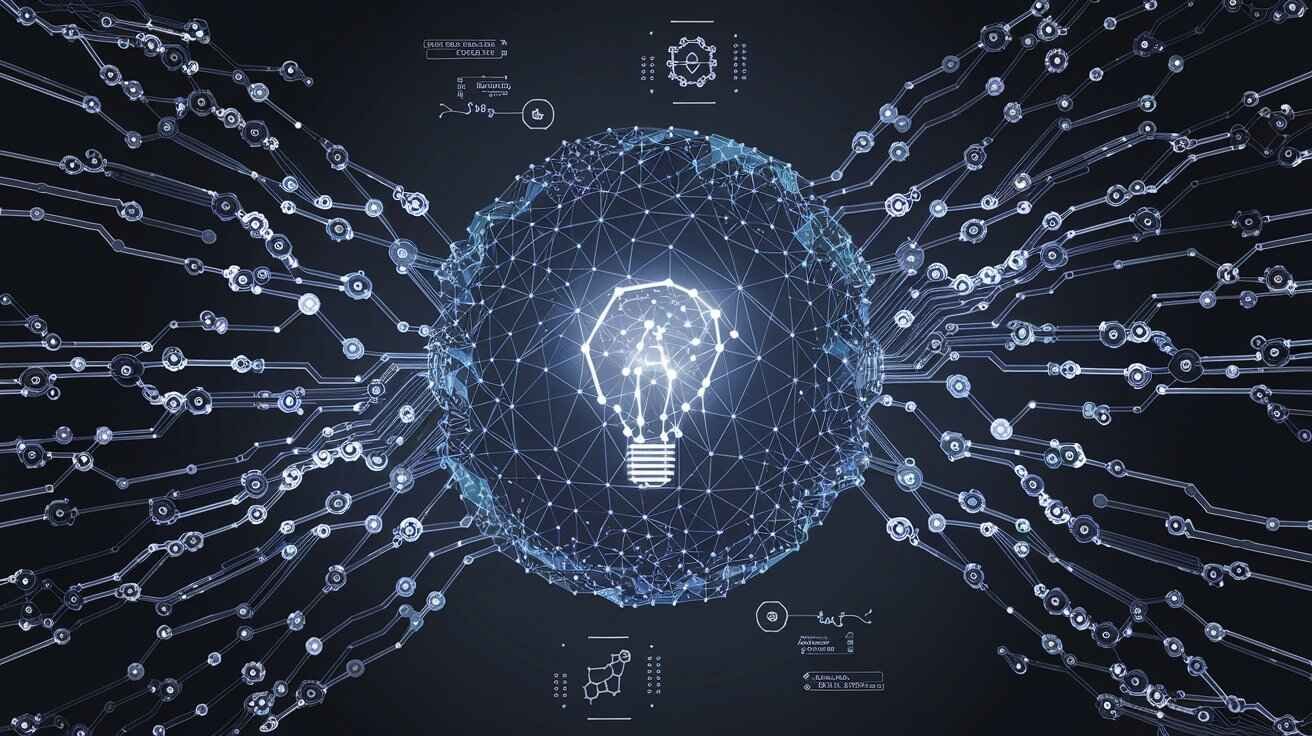Introduction: What Are Busbis 1660 Disruptive Technologies?
Disruptive technology is improvements that greatly alter how groups, industries, or even societies perform. These technologies often challenge current commercial enterprise fashions, merchandise, or services by offering new, more efficient, powerful, or better solutions to contemporary wishes. Clayton Christensen first introduced the idea of disruptive innovation in the 1990s, and it has become a critical framework for expertise on how markets evolve in reaction to new technological breakthroughs.
While many disruptive technologies start off as niche solutions, they evolve quickly, turning mainstream and displacing conventional techniques or groups. Recognizing those disruptive technologies early can assist groups in staying aggressive and becoming aware of possibilities for boom, innovation, and version.
In this text, we will discover the most prominent disruptive technology transforming industries. We will discuss how they work, where they may be making the greatest impact, and how businesses can prepare for the inevitable adjustments they bring.
What Are the Key Characteristics of Disruptive Technologies?
Disruptive technology fluctuates from incremental improvements in numerous vital ways. Their number one characteristics consist of the following:
- Radical Innovation: These technologies introduce entirely new methods of fixing issues that the present solutions cannot successfully address.
- Affordable and Accessible: Disruptive technologies frequently decrease costs, making formerly luxurious solutions available to a larger population or a unique market segment.
- Scalability: Once a disruptive technology has been refined, it scales quickly, impacting entire industries and opening up new business possibilities.
- Performance Improvement: Over time, disruptive technologies improve in value-effectiveness and overall performance, making them increasingly competitive with older technologies.
Understanding those developments is crucial for groups that aim to adapt and take gain of these improvements.
A Deep Dive Into Disruptive Technologies
Artificial Intelligence (AI) and Machine Learning
Artificial Intelligence (AI) and Machine Learning (ML) are the most powerful forces in the modern-day technological panorama. These innovations allow machines to mimic human intelligence and research information to make selections, predict, and optimize tactics.
AI and ML Applications Across Industries
- Healthcare: AI is revolutionizing healthcare by improving diagnostics, predicting affected person results, and personalizing treatment plans. AI-pushed tools can examine medical imaging, spot patterns in scientific information, or even help in drug discovery, making healthcare more efficient and accessible.
- Finance: AI and ML are remodelling finance by enhancing fraud detection, allowing algorithmic buying and selling, and optimizing customer service through chatbots and automated financial advisors.
- Retail: AI is used for stock management, customized purchasing studies, and calls for forecasting. Retailers leverage AI to expect consumer choices, enhance advertising techniques, and streamline delivery chain operations.
Blockchain Technology
Blockchain is a decentralized and immutable virtual ledger that securely records transactions. It is best known as the underlying technology behind cryptocurrencies like Bitcoin and Ethereum, but its capabilities go far beyond digital currencies.
Blockchain Applications in Various Sectors
- Finance: Blockchain disrupts traditional financial systems by offering quicker, more secure, and more powerful transactions. By removing intermediaries like banks, blockchain provides a peer-to-peer network for undertaking transactions and managing virtual belongings.
- Supply Chain: Blockchain presents transparent and traceable information, making it helpful in industries like supply chain management, where monitoring the beginning and adventure of merchandise is critical.
- Healthcare: In healthcare, blockchain may be used to manage patient records, ensure privacy, and prevent fraud by supplying a steady and immutable gadget for storing medical information.
5G Technology
5G is the 5th era of cell network technology, designed to be faster, more dependable, and able to support a sizeable number of connected devices. 5 G’s impact on industries like telecommunications, transportation, and healthcare is profound, supplying new possibilities for innovation.
The Impact of 5G Across Industries
- Autonomous Vehicles: 5G is a game-changer for self-driving motors. It allows near-on-the-spot communication between automobiles and their surroundings, which is important for secure and efficient operation.
- Healthcare: With 5G, telemedicine is becoming more efficient, permitting real-time consultations and distant surgeries, even in rural or underserved regions.
- Smart Cities and IoT: 5 G’s low latency and high-speed connectivity will drive the increase in smart towns, with programs ranging from traffic management and smart grids to waste control and public protection.
Electric Vehicles (EVs)
Electric vehicles are a high example of how disruptive technologies can rework industries. These cars use strength as gasoline rather than gas or diesel, which reduces harmful emissions and promotes sustainable mobility.
How Electric Vehicles Are Disrupting the Automotive Industry
- Environmental Impact: EVs help combat weather change by decreasing greenhouse fuel emissions, making them vital to international efforts to attain sustainability.
- Cost Efficiency: With enhancements in battery generation, the cost of EVs is lowering, making them more affordable to purchasers. In the future, the total cost of possession might be lower than that of conventional fuel-powered automobiles.
- Autonomous Capabilities: Many electric automobiles come with autonomous driving capabilities, which could push the car enterprise toward a self-using era.
Also checkout: Free Government Tablets 2024: How to Qualify, Apply, and Get Yours Fast
Quantum Computing
Quantum computing represents a breakthrough in computing energy. Unlike conventional computers that use bits to calculate statistics, quantum computers use quantum bits (qubits), which can constitute and calculate more than one state simultaneously. This permits quantum computer systems to perform complex calculations that might take classical computer systems hundreds of thousands of years in a fraction of the time.
Potential Applications of Quantum Computing
- Cryptography: Quantum computing can damage current encryption strategies, pushing the development of quantum-resistant encryption strategies.
- Drug Discovery: Quantum computer systems ought to revolutionize drug discovery and improvement by simulating molecular interactions, leading to more effective remedies for illnesses.
- Optimization: Quantum computing can resolve complicated optimization issues, benefiting industries like logistics, supply chain management, and economic modelling.
CRISPR and Gene Editing Technologies
Gene-enhancement technology, especially CRISPR-Cas9, has the capability to revolutionize medication, agriculture, and biotechnology. CRISPR allows scientists to make precise changes to DNA, providing the opportunity to treat genetic illnesses and enhance crop yields.
Applications of CRISPR in Medicine and Agriculture
- Medical Treatments: CRISPR holds promise for treating genetic problems like sickle cellular anaemia, cystic fibrosis, and muscular dystrophy by directly enhancing defective genes.
- Agricultural Innovations: In agriculture, CRISPR may be used to create vegetation that is resistant to pests, sicknesses, and environmental stresses, supporting secure meal delivery in the face of climate change.
- Biotechnology: CRISPR is also being used to create genetically changed organisms (GMOs) with unique tendencies, enhancing food quality, disease resistance, or even biofuels.
Robotics and Automation
Robotics and automation technology are unexpectedly evolving, impacting industries such as manufacturing, logistics, and healthcare. These technologies permit machines to perform repetitive tasks with precision, velocity, and performance, decreasing the need for human exertion.
Robotics and Automation in Key Industries
- Manufacturing: Robots are increasingly used in manufacturing to gather products, package goods, and perform quality management. This not only improves efficiency but also reduces costs and human errors.
- Logistics: Automated warehouses, delivery drones, and robotic sorting structures are remodelling the logistics industry, speeding up the distribution technique and reducing operational fees.
- Healthcare: Robotics in surgical operation and rehabilitation improve precision, decrease recovery instances, and make medical treatments more effective.

Augmented Reality (AR) and Virtual Reality (VR)
Augmented Reality (AR) and Virtual Reality (VR) are swiftly advancing fields that permit users to engage with digital content in immersive ways. These technologies are used for enjoyment, training, healthcare, and retail.
Impact of AR and VR on Various Sectors
- Entertainment and Gaming: VR offers immersive gaming experiences, even as AR complements live activities, sports broadcasts, and cellular gaming reviews.
- Education: AR and VR are transforming education by providing interactive, hands-on learning environments that assist college students in visualizing complicated principles.
- Healthcare: In healthcare, AR and VR are used to make surgical plans, educate medical specialists, and impart therapeutic studies to patients.
How Businesses Can Leverage Disruptive Technologies
To correctly navigate disruptive technologies, businesses must adopt forward-wondering strategies and frameworks. Here are a few key methods:
Innovation and R&D Investment
Investing in studies and development (R&D) is crucial for groups that want to live before the curve. By fostering a tradition of innovation, businesses can explore new programs for disruptive technology, uncovering new sales streams and enterprise opportunities.
Adopting Agile Methodologies
Incorporating agile methodologies into commercial enterprise operations allows groups to adapt quickly to changes, test new ideas, and pivot as needed. The capability to respond to shifts in era and market demand is important for staying competitive.
Collaboration and Partnerships
Businesses can accelerate their adoption of disruptive technologies by forming partnerships with startups, tech groups, and research establishments. Collaborating allows corporations to access new technologies, share know-how, and co-create solutions that might otherwise be out of reach.
Scenario Planning and Risk Management
Given the uncertainty surrounding the pace and effect of disruptive technology, businesses must interact in scenario planning to prepare for multiple future consequences. Effective change control techniques can help mitigate the demanding situations of new technologies.
Conclusion
Disruptive technologies are transforming the sector as we know it, opening new markets, reshaping industries, and supplying unprecedented possibilities for innovation. From synthetic intelligence and blockchain to quantum computing and gene editing, these technologies are creating new paradigms for groups and purchasers alike.
By specializing in the characteristics and applications of disruptive technology, companies can not only survive but thrive in a rapidly changing environment. Staying agile, investing in R&D, and forming strategic partnerships may be key to harnessing the full potential of these improvements. Embrace disruption, and the future might be full of boom and success.
FAQs
1. What is disruptive technology?
Disruptive technology is improvements that significantly change industries by changing traditional systems and developing new marketplace leaders, including AI, blockchain, and electric cars.
2. How does disruptive technology affect businesses?
They can force innovation, reduce prices, and create new opportunities. However, agencies that don’t adapt might also become obsolete or lose market share.
3. What are some examples of disruptive technology?
Examples encompass:
- AI in healthcare and finance
- Blockchain in banking and supply chain
- Electric Vehicles in Transportation
- Quantum Computing for complicated statistics evaluation
- 5G for advanced connectivity and IoT
4. How can corporations undertake disruptive technologies?
Businesses can adopt them by investing in R&D, partnering with tech startups, using agile methods, and training personnel.
5. What are the dangers of adopting disruptive technologies?
Risks encompass high initial prices, resistance to alternatives, security issues, and market uncertainty.
Also Read: Why Vision Pro Displays a Triangle: Causes, Fixes, and Prevention Tips





